
It may surprise you, but the Shih Tzu’s name means little lion. However, Shih Tzus are anything but fierce. Shih Tzus are bred specifically to be lovable companions. They have an outgoing, happy-go-lucky, affectionate personality and will follow their owners from room to room. Recently, owners have begun to train Shih Tzus to not only be companion dogs but to participate in agility, rally, and obedience competitions.
Did You Know?
- You have to be careful when housebreaking your Shih Tzu, as they are known to be difficult in this aspect. Always have them supervised until they are completely trained, otherwise, you may find a surprise or two in your house. Try crate training them.
- Shih Tzus have coats that mat easily, so be ready to brush their coat every day.
- Shih Tzus are prone to suffering from dental problems and also tend to snore and wheeze.
- If you’re looking for an imperial Shih-Tzu, a miniature Shih Tzu, or a teacup Shih Tzu, don’t trouble yourself – there are no such breeds. Unscrupulous breeders will market small and large Shih Tzus as separate breeds, but they are all just one breed: Shih Tzu.
- If the weather is hot, keep your Shih Tzu indoors and in air-conditioned rooms. Due to the flat shape of their face, Shih Tzus can’t efficiently cool the air they breathe and will be susceptible to heat strokes if the weather is too hot.
- Shih Tzus are prone to coprophagia (the habit of eating their own or other animals’ feces) more than other dogs are. To avoid this, make sure you clean up poop immediately and watch them closely so it never becomes a habit.
Breed Characteristics
Adaptability

Apartment Adaptability: 5/5
Good for First-Time Owners: 5/5
Tolerates Time Alone: 3/5
All-Around Friendliness

Family Friendly: 5/5
Dog Friendly: 4/5
Stranger Friendly: 5/5
Health Grooming

Shedding Level: 3.5/5
Ease of Grooming: 1/5
Average Healthiness: 3.5/5
Trainability

Ease of Trainability: 3/5
Intelligence Level: 4.5/5
Barking and Howling Tendencies: 1.5/5
Exercise Needs

Active Level: 2/5
Intensity Level: 2.5/5
Playfulness Level: 4/5
 Overview
Overview
American composer and teacher James Mumsford is often quoted as describing the Shih Tzu in the following way:
“Nobody knows how the ancient eunuchs managed to mix together: a dash of lion, several teaspoons of rabbit, a couple of ounces of domestic cat, one part court jester, a dash of ballerina, a pinch of old man, a bit of beggar, a tablespoon of monkey, one part baby seal, a dash of teddy bear, and, for the rest, dogs of Tibetan and Chinese origin.”
Shih Tzus are small, regal dogs with long and abundant locks. They have a very distinctive face that many people find adorable and they have a friendly attitude. Shih Tzus were originally kept by royal Chinese families during the Ming Dynasty. However, don’t let their classy background fool you: Shih Tzus are not pampered dogs that just lie about. Shih Tzus are very lively and friendly companions.
The Shih Tzu is not a hunting, herding, or guarding dog. He was bred specifically for the purpose of companionship. No matter where they are, Shih Tzus will make friends with everyone and will happily greet friends and strangers alike. Shih Tzus are also very adaptable dogs. He will love his surroundings, whether it is in an apartment in the city of out in the field on a country farm.
The Shih Tzu gets along great with both children and other animals. However, due to their small size, it’s a good idea to keep an eye on them when they’re playing with others. Usually, playdates between children and dogs should be supervised because the kids might get hurt if they play too rough; in this instance, however, it’s the Shih Tzu who’s at risk. Even though they’re sturdy, Shih Tzus could get hurt during rough play due to their small size.
One of the Shih Tzu’s nicknames is the Chrysanthemum Dog, due to the way his hair grows out in many different directions, often looking like a flower with a nose as the center. Another unique characteristic of the Shih Tzu is his undershot bite. When his mouth is closed, his upper teeth bite inside his lower teeth instead of the outside. This is due to having a slightly wider lower jaw compared to his upper jaw.
Shih Tzus are also well known in the Buddhist world. According to one legend, a Shih Tzu accompanied Buddha in one of his journeys. Along the road, Buddha was ambushed by robbers who intended to murder him after stealing his things. However, they failed thanks to the Shih Tzu. Upon seeing Buddha’s life was in danger, the little Shih Tzu turned into a big and ferocious lion and chased the robbers away. He then turned back into his original form, which is when Buddha picked him up and kissed him on the head. People say that the white spot found on many Shih Tzu’s heads is the place where Buddha kissed him. There’s also the belief that Fu Dogs, Chinese guardian lions of Buddhist temples, are representations of the Shih Tzu and his ferocious transformation.
History
According to a recent study, the Shih Tzu is among the 14 oldest dog breeds in the world. Shih Tzus are ancient dogs that have been around as early as 8,000 B.C. based on dog bones found in China. However, there is no certain knowledge of how Shih Tzus came about. Some speculate that Tibetan Monks bred them as gifts to Chinese royalty. Others believe that Shih Tzus were bred in China by crossing the Pekingnese and Lhasa Apso with other breeds.
Due to historical findings, it’s easy to see how the Shih Tzu has been a beloved companion since ancient times. Different artworks and writings from China’s Tang Dynasty portray small dogs that resemble the Shih Tzu. Other documents and pieces from 990-994 A.D. also make references to the Shih Tzu. Mongolian Emperor Kubla Khan even kept little “lion” dogs (believed to be Shih Tzus) with his hunting lions in order to keep them calm, according to Marco Polo. Several documents from the Ming Dynasty (1368-1644) mention how Chinese royal families kept “little lion dogs” and “chrysanthemum-faced” dogs that were described as intelligent, small, docile dogs. Even though there are many depictions of tiny, shaggy, friendly dogs in art pieces from the 1700s to the early 1900s, they are not mentioned much in documents from that period.
The Shih Tzu gained popularity in the Imperial Court in 1861 due to Empress T’zu Hsi, Empress of China. According to one of her first royal edicts, anyone found guilty of torturing palace dogs would face the death penalty. Extensive breeding programs for Shih Tzus were carried out under Empress T’zu Hsi by the palace eunuchs. Reportedly, the Dalai Lama gave Empress T’zu Hsi a pair of Shih Tzus, which is how the little lion dogs ended up in the palace. The Shih Tzus were supposedly trained so that they would sit up and wave their front paws whenever Empress T’zu Hsi visited.
After the death of the Empress in 1908, there was a lot of competition among the royal families to produce dogs with fine coats and colors. In order to make sure they didn’t lose their advantage, the royal families kept their individual breeding practices secret from each other. Marketplaces sold low-quality dogs while the high-quality ones were usually smuggled from the palaces to be given as gifts to Chinese noblemen and foreign guests.
Shih Tzus made their journey from China to England in 1928 when Lady Brownrigg, wife of north China command’s quartermaster general, brought over a male and female pair of Shih Tzus from Peking. A Shih Tzu from China was brought to Ireland in 1933 by a Mrs. Hutchins and was subsequently bred to Lady Brownrigg’s Shih Tzu. Lady Brownrigg’s kennel was thus formed, with these three Shih Tzus serving as the foundation.
Philip Price, Lady Brownrigg’s nephew, was the first to import Shih Tzus into the United States and bred them along with Maureen Murdock. By 1960, three Shih Tzu clubs were established: the Texas Shih Tzu Society, the American Shih Tzu Association, and the Shih Tzu Club of America. In 1963, the American Shih Tzu Club was formed when the Texas Shih Tzu Society and the Shih Tzu Club of America decided to merge. The American Kennel Club recognized the Shih Tzu in 1969 as part of the Toy Group breed.
Size
 There is no strong distinction between male and female Shih Tzus when it comes to size. Both genders stand between 9 and 10 1/2 inches tall and both weight between 9 and 16 pounds total.
There is no strong distinction between male and female Shih Tzus when it comes to size. Both genders stand between 9 and 10 1/2 inches tall and both weight between 9 and 16 pounds total.
Appearance
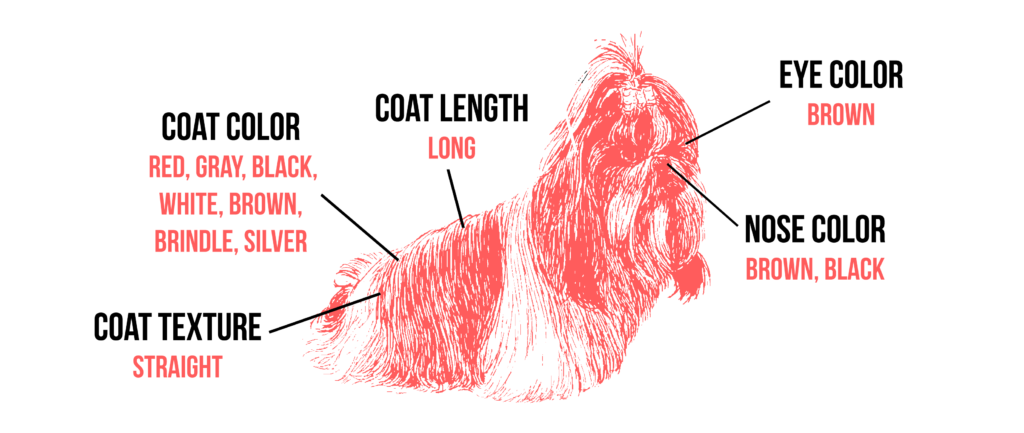 Shih Tzus that have a white blaze on the forehead and a white tip on the tail are very valuable. They have a long and silky coat that comes in various colors: gray and white, black and white, red and white, or just plain black. However, it takes a lot of work to keep a Shih Tzu’s coat looking great.
Shih Tzus that have a white blaze on the forehead and a white tip on the tail are very valuable. They have a long and silky coat that comes in various colors: gray and white, black and white, red and white, or just plain black. However, it takes a lot of work to keep a Shih Tzu’s coat looking great.
Behavior
Personality
Some dogs are bred for hunting while others are bred for guarding; not the Shih Tzu. If you were looking to buy or adopt one, chances are it would be to keep him as a companion, which is exactly what Shih Tzus are bred for. Shih Tzus will follow you wherever you go because all they want to do is spend time with you. This highly affectionate breed is known to be happiest when he is around family, both giving and receiving attention.
However, don’t mistake his affectionate characteristic for laziness. Shih Tzus are very lively and alert. They may even bark at the presence of newcomers, but this is not meant to scare them away. In fact, Shih Tzus will happily greet these guests and be more than happy to make friends with them, as it is in their nature to do so.
Children and Other Pets
Shih Tzus make great companions for both children and other pets. They have very docile personalities and get along well with whoever is present. However, due to their small size, it’s important to know how to appropriately play with Shih Tzus so as to avoid injuring them. Kids should sit on the floor to play with Shih Tzu puppies if they don’t want to risk dropping them and hurting them in the process. A Shih Tzu’s eyes can be easily injured, so make sure your children learn to keep their fingers away from that area.
Health
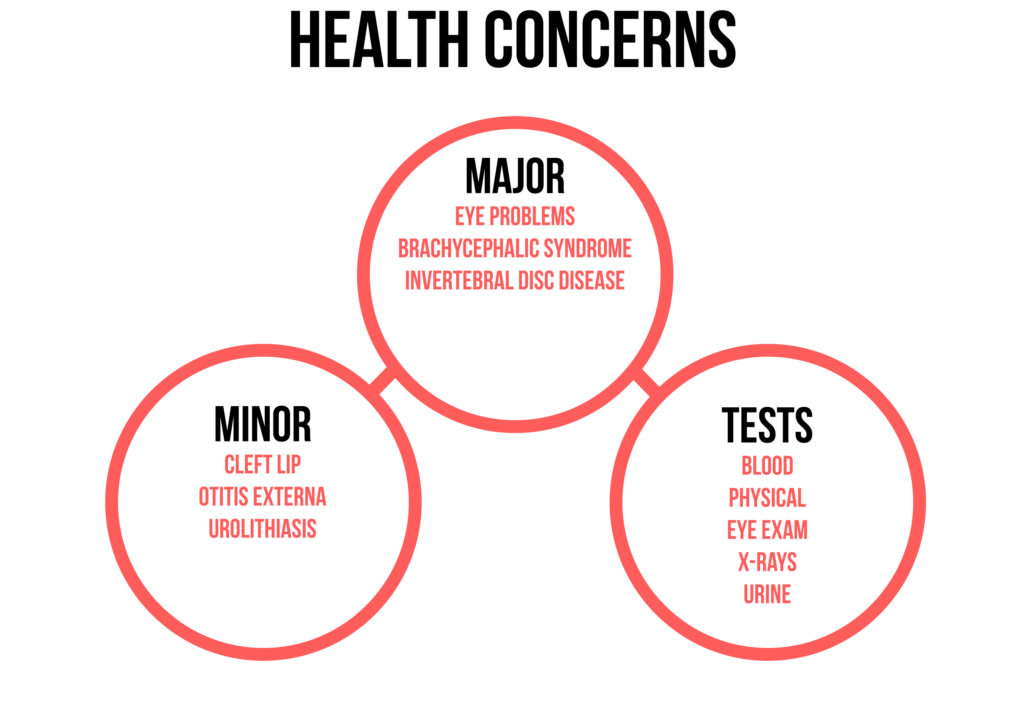 Even though Shih Tzus are healthy for the most part, every dog is prone to certain conditions that affect their particular breed. Please review the following list of conditions that can likely affect Shih Tzus in order to be better prepared to take care of your dog.
Even though Shih Tzus are healthy for the most part, every dog is prone to certain conditions that affect their particular breed. Please review the following list of conditions that can likely affect Shih Tzus in order to be better prepared to take care of your dog.
Allergies
Dogs, in general, can suffer from three main types of allergies. If your Shih Tzu suffers from food allergies, treat it by trial and error until you discover which food causes the allergies. If they suffer from contact allergies, such as from flea powder, dog shampoos, or bedding, remove the cause of the allergy.
If your Shih Tzu suffers from inhalant allergies, like when they breathe in dust, mildew, or pollen, make sure they receive the proper allergy medication based on the severity of the allergy. Pay attention if your Shih Tzu suffers from ear infections, as that may be a sign of inhalant allergies.
Tooth and Gum Problems
Due to the way a Shih Tzu’s jaw is formed, they are prone to different teeth issues. When a Shih Tzu’s permanent teeth come in, their baby teeth may remain in place, which can cause gum and tooth problems. If this is the case with your Shih Tzu, have your veterinary extract their baby teeth. Misaligned and missing teeth are not uncommon due to the Shih Tzu’s undershot jaw. Frequently brush your Shih Tzu’s teeth, especially during puppyhood, and report any dental problems your Shih Tzu has to your veterinary.
Reverse Sneezing
Your Shih Tzu may suffer from reverse sneezing whenever allergens are present, if they gulp their food too fast, or if they are overly excited. Reverse sneezing results in nasal secretions dropping onto the dog’s soft palate, which cause it to close over their windpipe. Your Shih Tzu may become alarmed and make a wheezing sound. To shorten the episode, try your best to calm him down and talk to him in a soothing way. Some people believe that the fastest way to stop reverse sneezing is to pinch their nostrils closed, which forces the dog to breathe through its mouth.
Umbilical Hernias
One of the more common conditions among Shih Tzus is umbilical hernias. Often caused by a delayed closure of the abdominal midline, umbilical hernias may close on their own as the puppy matures if they are small enough. Otherwise, surgery may be necessary to correct the problem.
Snuffles
Having the snuffles may sound like a cute, if harmless, condition. Unfortunately, this is not the case. Affecting Shih Tzus due to their teething problems, snuffles will cause a dog’s gums to swell at around the four-month benchmark. Due to the gums pushing against their flat-faced noses from inside, your Shih Tzu may wheeze, snort, snore loudly, or snuffle while suffering from the condition.
Bladder Stones and Infections
Keep an eye out for symptoms such as bloody urine, loss of appetite, frequent urination, and difficult urination as these may be signs of bladder stones and bladder infections. These conditions may be brought about by a number of factors, like bacterial and viral infections, excessive phosphorus, protein, and magnesium in their diet, as well as long wait times between urination. Take your dog to the vet if they suffer from any of these symptoms.
Juvenile Renal Dysplasia (JRD)
Known as a genetic defect affecting a young dog’s kidneys, juvenile renal dysplasia (JRD) will cause loss weight, lack of vigor, vomiting, excessive thirst and frequent urination. Geneticists have developed a number of swab tests, but none are 100 percent accurate. The only sure way to find out is by doing a wide-wedge biopsy of the kidney, which can be very risky and be very invasive.
Ear Infections
Shih Tzu ears are a perfect environment for ear infections due to their dropped ears creating a warm and dark ear canal. Clean their ears at least on a weekly basis and check them while grooming to make sure they’re doing well.
Eye Problems
Due to their large, bulging eyes, Shih Tzus can suffer from a variety of eye disorders. Progressive retinal atrophy is a degenerative disease that can progress to blindness. Distichiasis results in eyelashes rubbing against the eye due to an abnormal growth of the eyelashes on the eye’s margin. They may also suffer from ectopia cilia, which is similar to distichiasis. Keratitis is an inflammation of the cornea and can lead to blindness and corneal ulcers. Keratoconjunctivitis sicca, commonly known as dry eye, is a dryness of the conjunctiva and the cornea. Proptosis is another condition where the eyeball becomes dislodged from the eye socket and the eyelids clamp behind the eyeball. If you notice your dog is suffering from any of these symptoms, contact your vet right away.
Patellar Luxation
Sometimes causing crippling, patellar luxation is a dislocation of the kneecap. The condition is characterized by a knee joint, usually in the hind leg, painfully sliding in and out of place.
Portosystemic Liver Shunt
Portosystemic liver shunt is a congenital abnormality that is best treated with surgery. Dogs suffering from this condition have blood vessels that allow blood to bypass the liver, which results in the blood not being cleansed as it should be.
Canine Hip Dysplasia
A condition that affects dogs in general, canine hip dysplasia is an abnormal formation of the hip socket that can result in pain and lameness.
Maintenance
 Care
Care
Known as a very adaptable dog, the Shih Tzu goes wherever you go and is happy to live wherever you live, whether it’s in a large suburban house, a country home, or a small city apartment. While Shih Tzus may enjoy time outside, they are very much house dogs and should not be left outside for extended periods of time. For the most part, your Shih Tzu will want to sit on your lap, play with toys, greet visitors, or wander around the house. Shih Tzus are not very active, but they will be content with daily short walks.
Shih Tzus are sensitive to the heat, just like many other breeds with short, flat faces. To avoid any risk of heat exhaustion, keep him indoors in a cool space on hot days. Shih Tzus are known jumpers, as they constantly like to jump from beds and chairs. These heights might be small from a human’s perspective, but not from a Shih Tzu’s perspective. Keep an eye out when this happens, as these jumps can often lead to injuries. Because they are front heavy, they crash forward and can suffer from concussions among other head injuries.
Keep your Shih Tzu close and hold him securely when carrying him so that he doesn’t jump out of your arms. Due to his natural friendly attitude, some owners may not think their Shih Tzu is in need of socialization and training, but they are. If not properly trained and socialized, your Shih Tzu can become quite timid. You can ensure your Shih Tzu is well-rounded by teaching him from an early age and properly socializing him.
If you own (or plan to own) a Shih Tzu, keep in mind that they are generally considered to be difficult to housebreak. Don’t let your dogs become accustomed to using the carpet as a bathroom. Some owners teach their Shih Tzus to use a litter box so they don’t have to walk them during bad weather. Crate training is very helpful when it comes to housetraining, simultaneously providing them a quiet place to relax. This type of training is also very helpful when it comes to traveling with your Shih Tzu.
Feeding
A dog’s diet depends on their individual size, build, activity level, age, and metabolism. However, the average recommended daily amount is 1/2 to 1 cup of high-quality dry food per day.
Grooming
Due to the type of coat that they have, daily brushing and combing are necessary if you want to prevent tangles. Bathing your Shih Tzu once a week is also a good option. If you can afford it, consider hiring a professional groomer to clip your Shih Tzu’s long locks. Sure, you won’t have a Shih Tzu with long, beautiful locks but you also won’t have to deal with the chore of daily brushing. By trimming their coat short, you can plan grooming appointments six to eight weeks apart. If you decide to groom your Shih Tzu by yourself, make sure both you and your pet have as pleasant an experience as possible.
Start grooming him from puppyhood so that he becomes accustomed to it. Teach your dog to lie on his side while you’re brushing him and brush all the way down to the skin. By brushing in sections, you will make the experience easier and more comfortable for both you and your dog. When your Shih Tzu hits the age of 10 to 12 months, their coat will change from a puppy fluff to a silky adult coat. This phase can make brushing even more laborious but hang in there, as this only lasts for about three months. Brushing will become easier once the adult coat comes in.
Their nails should be trimmed about once a month. Check his ears on a weekly basis for any sign of redness, bad odor, or dirt that may cause infections. Use a cotton ball dampened with gentle, pH-balanced ear cleaner to wipe their ears and clean them properly. If your Shih Tzu gets a lot of ear infections, you may need to pluck some of the hair that grows inside their ear canal. If you don’t feel comfortable doing this, you can take them to a vet or professional groomer.
Check and clean their faces often. After eating, a Shih Tzu’s face gets dirty and his eyes tear up easily. Regularly clean their face with a soft cloth dampened with warm water. Breeds like the Shih Tzu are prone to dental problems, so make sure you brush his teeth regularly to avoid any problems. Use doggie toothpaste and a soft toothbrush to regularly clean his teeth in order to keep his teeth and gums in a healthy condition.
Questions
How long do Shih Tzus live?
Shih Tzus have an average lifespan of about 10 to 16 years.
Why is a Shih Tzu considered a great apartment dog?
Shih Tzu’s are very adaptable dogs that can enjoy life no matter where they are, whether it’s in a country home or in a small city apartment. As long as they’re with their family, they will be happy.
Lhasa Apso v.s. Shih Tzu?
Shih Tzus are believed to come from Lhasa Apso dogs. Both are high maintenance, shed minimally, and are hard to housebreak. They’re both great family pets, though, so you will be lucky to have them as part of the family either way.
Resources
Rescue Groups
Before you can adopt a Shih Tzu, make sure you do your research and are sure that they are a good fit for you. There are a number of Shih Tzus in need of adoption. The following list only covers a few of the rescue groups out there. Contact the national breed club if you don’t see a rescue group listed for your area.
- Save A Shelter Shih Tzu
- Ohio Fuzzy Pawz Shih Tzu Rescue
- Crossroads Shih Tzu Rescue
- Lhasa Happy Homes
- Furbaby Rescue
- Furever Shih Tzu & Companion Dog Rescue
- Shih Tzus & Furbabies Small Breed Dog Rescue
- Bluegrass Shih Tzu Rescue
- Lone Star Shih Tzu & Lhasa Apso Rescue of Texas
- Save the Tzus
Breed Organizations
Click on any of the links below to find additional information about the Shih Tzu from these breed clubs, associations, and organizations.
- American Shih Tzu Club
- The Shih Tzu Club UK
- Shih Tzu Club of Wisconsin’s Fox Valley
- Shih Tzu Club of Southeastern Wisconsin
- Puget Sound Shih Tzu Fanciers
- Twin Cities Area Shih Tzu Club
- Golden Gate Shih Tzu Fanciers
- Shih Tzu Fanciers of Southern California
Top Breeders
The following is a list of the most reputable Shih Tzu breeders of 2017.
- Serendipity Shih Tzu
- Puppies on the Prairie
- High Point Shih Tzu
- Shih Tzu Garden
- Shih Tzu Treasures
- Denimay Shih Tzu
- Glory Ridge Shih Tzu
Shih Tzu Adults For Sale
If you’re interested in purchasing adult Shih Tzus, click on the links below to find what you’re looking for.
Shih Tzu Puppies For Sale
Interested in a Shih Tzu puppy? Below you will find different online marketplaces that have Shih Tzu puppies for sale.
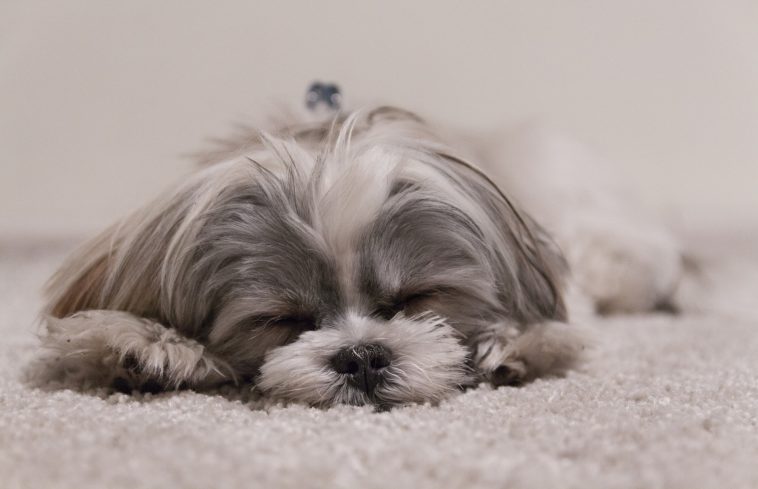
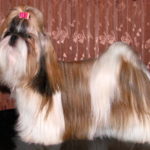
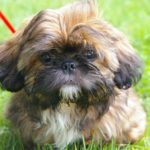



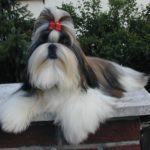
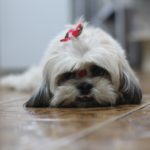

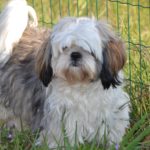
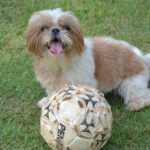

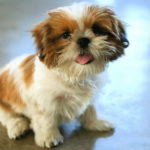
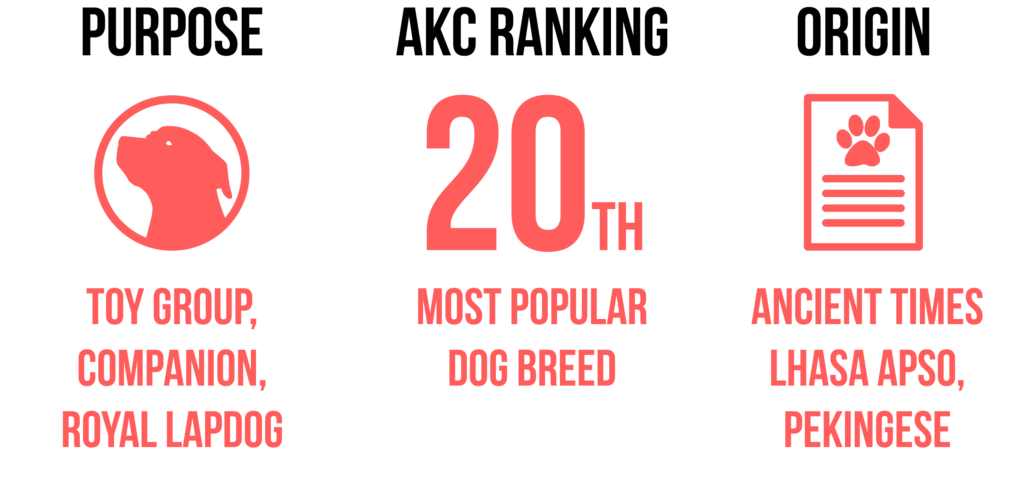 Overview
Overview Care
Care